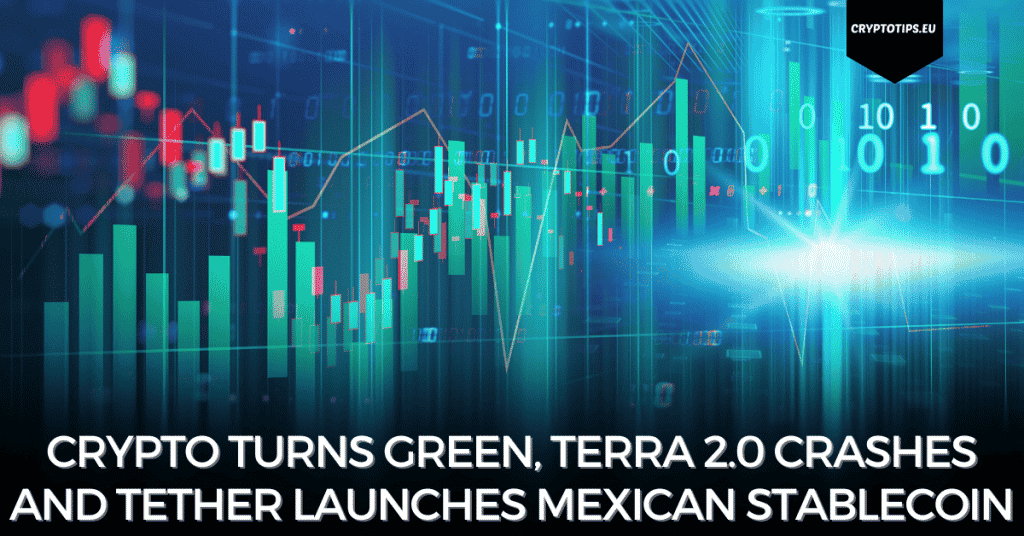Crypto Turns Green, Terra 2.0 Crashes And Tether Launches Mexican Stablecoin
Last Updated on 31 May 2022 by CryptoTips.eu
Crypto markets turn mostly green on Monday and Bitcoin manages to stay above $30k. At the time of writing, Bitcoin is trading at $31,7k (in the late hours of Sunday it had hit a seven-day high of $30,723 already, meaning traders now see a short rally).
Several altcoins rose as well, with Cardano being the most prominent. The coin founded by Charles Hoskinson rose 13% to trade at 58 cents.
Terra 2.0 Crashes
Terra creator Do Kwon still has some supporters left I guess. The former founder of Terraform Labs announced last week he would start a new version of the Terra blockchain, “Terra 2.0,” with freshly minted LUNA tokens.
In 2009, Bernie Madoff lost investors $60 billion. He was sentenced to 150 years in prison.
— Fintwit (@fintwit_news) May 29, 2022
In 2022, Do Kwon lost investors $60 billion after Luna collapsed to $0. He then created Luna 2.0. pic.twitter.com/CkCC8AKPVR
This weekend he did indeed launch (CoinMarketCap placed a message stating: the original Terra has rebranded to Terra Classic and new chain is created with the existing Terra name), only to see LUNA (called LUNA2 on some exchanges) lose some 73% of its initial value on the first day. At the time of writing, LUNA trades at $8.
$luna 2.0 launch exasperated the people's pain. pic.twitter.com/nASB94cyA7
— Ethercool (@ethercool) May 30, 2022
This weekend, LUNA2 peaked at $19.54.
Tether launches Mexican stablecoin
Seeing the growth of cryptocurrencies in Latin America, and wanting to convince everyone their coin had no problems whatsoever (some feared it would follow the same path as TerraUSD, the stablecoin that collapsed a few weeks ago), the company behind crypto’s biggest stablecoin, Tether, just launched a new stablecoin called MNXT paired with the Mexican peso.
GM Mexico! 🇲🇽 pic.twitter.com/nhbKhKIuk8
— Tether (@Tether_to) May 26, 2022
The CTO of Tether, Paolo Ardoino, said:
We saw an increase in the use of cryptocurrencies in Latin America over the past year, which showed us that we needed to expand our offer.
Tether claims this regional stablecoin will serve as an experiment to acquire new users in Latin America. It could also be the first step before the launch of other stablecoins in the region, think of Colombia and Brazil.
